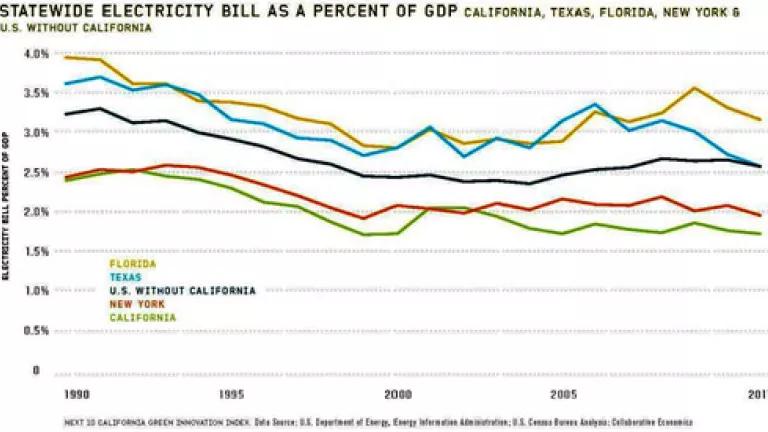
The nation’s two largest states compete at many levels, as my friend former Texas Secretary of State and “Texas triumphalist” Hope Andrade likes to remind me, although she’s convinced that her state beats California in every dimension.
I concede that Texas has a rural bakery that makes the nation’s best kolaches, which are delectable Eastern European pastries, and I’ve heard the Lone Star State is home to some pretty good barbecue, as well. Hope agrees, but she also likes to brag that electricity costs less in Texas than in California, and if you look just at the cost of a kilowatt-hour, she’s clearly right; on average each of them costs at least 30 percent less in Texas.
But the real test of a state’s competitiveness is its utility bills, not its electricity rates. After all, people care more about the size of the check they write each month to their utility, not the kilowatt rate per hour – if they can even figure out what it is from their complicated bills. In fact, most people can’t even define the term kilowatt-hour.
And how do California and Texas compare, for example, in terms of how much the state’s households and businesses pay every year for electricity, compared to the size of the state economy? Does Texas’s advantage in rates hold up on that critical measure? And what is the long-term trend in annual electricity payments for each state?
The definitive answers appear in the new California Green Innovation Index, which is compiled annually by a meticulous group of economists who work for a nonprofit called Next10.
Measured as a fraction of the state’s economy, Texas’s total electricity bill is almost twice the size of California’s. As the Innovation Index calculates it, “Californians had $29 billion more [annually] to spend on other uses – money that would have gone toward energy costs if California operated at the same level of efficiency as Texas.” That will buy a lot of kolaches and barbecue. In fact, as the graph below shows, Californians’ energy bills are 40 percent lower than what Texans pay (and 25 percent below the national average).
The Index also looks at long-term trends in electricity bills. For California households, over the past 20 years, an 8 percent overall decline contrasts favorably with Texas’s 5 percent increase.
There’s no doubt the efficiency gap is growing. Californians have been doing more with less for decades. The result has been more money in their pockets, cleaner air from avoiding the need to build at least 30 dirty power plants (preventing annual climate-warming carbon pollution equivalent to emissions from 5 million cars), and California being ranked No. 1 in clean energy jobs again this year.
That likely won’t cause triumphalists like my friend Hope to recant their belief that everything is better in Texas. But for anyone looking at enduring sources of competitive advantage, California’s decades of emphasis on efficiency standards and incentives is paying real dividends, which can be measured in the tens of billions of dollar every year. And that makes California utility customers the real winners.



